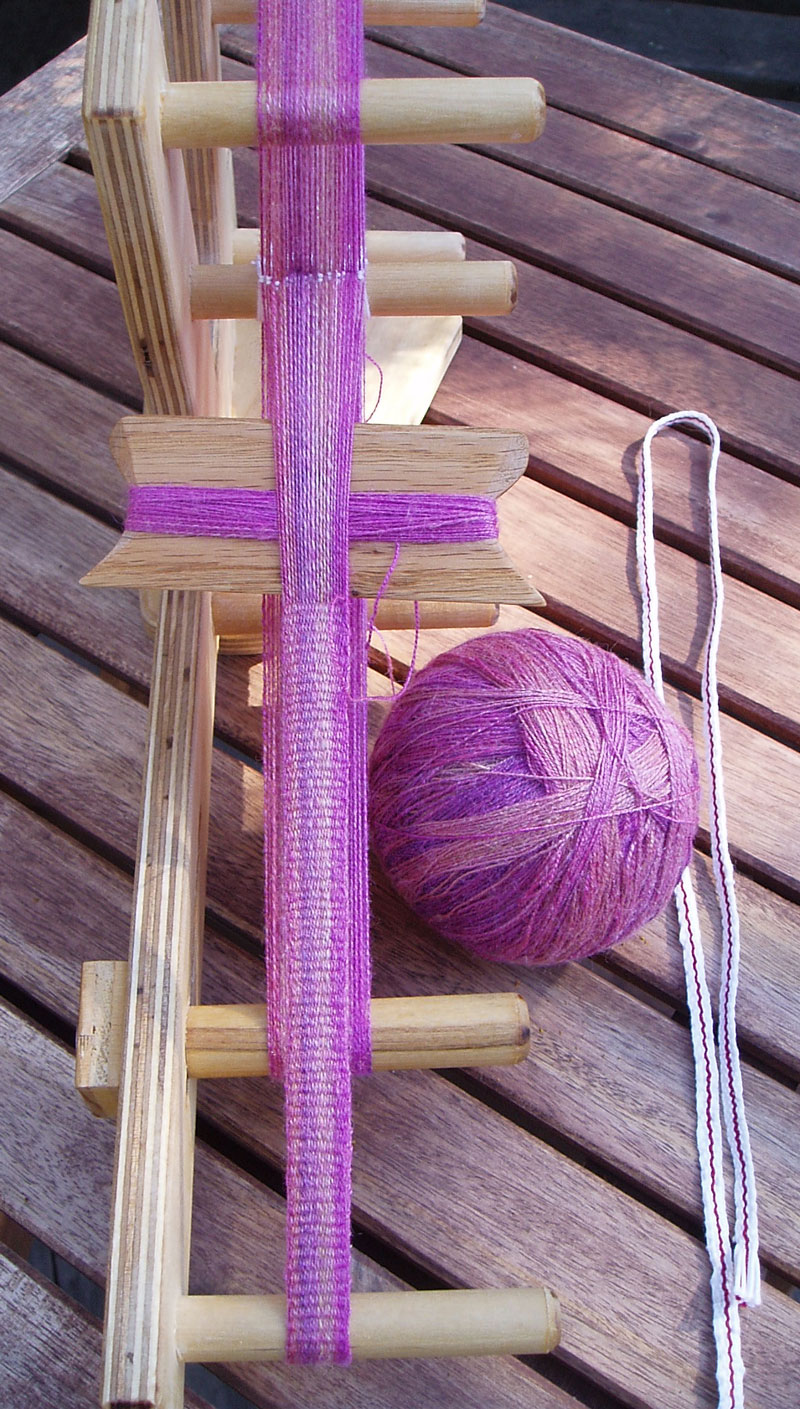As you know, I do a lot of spinning for the heck of spinning. Spinning without a project in mind. The only purpose is to slow my brain down and focus on the here and now. It’s great. It’s really helped me through some rough periods in the last few years.
For the most part, I have successfully used my hand spun yarn for knitting projects. But now, I’m playing with my yarns for other applications, and I’m finding the limitations of my hand spun. It may be time to revisit the mindless spinning thing.
Why?
Let’s start with tatting. My small bits of hand spun silk are pretty, but the “links” in the chain ply causes problems when creating the knots. Normal knots aren’t too bad, but it really causes problems when joining at picots or creating a circle. The links catch and it’s difficult to close the loops. I think the best plying method for tatting would be a plain old 2-ply thread.
I can also tell when I got a little lazy and used long draw instead of short forward draw for a true worsted yarn. Why is this point important? The slight halo of the silk also contribute to the problems. The fuzziness causes the yarn to stick to itself, which makes fixing problems difficult. Not unlike trying to frog a mohair project. True worsted yarn would smooth all the fibers down, and reduce the halo effect.
And then there’s this:
I got hooked on inkle loom weaving. This is a mini loom by Palmer Looms. The white band with the red center line is the sample I took in Sara Lamb‘s Inkle Weaving session at SOAR using #10 crochet cotton. The ball of yarn is what is on the inkle loom. It is hand spun silk, 2 ply, about 40 wpi.
Don’t let the pinkness fool you, the full length of the yarn ranges from peach to blue. I was rather disappointed at how long the repeats were when I was warping the inkle loom. I wanted stripes of colors.
But guess what? There were variations in all that pinkness. And it showed up as subtle stripes in the woven ribbon! I’m pretty happy with this. It’s a practice ribbon. And I can see this as a possible gift wrapping ribbon or a hair tie.
But what’s wrong with the yarn? It’s fuzzy. I know it doesn’t look like it, but it was spun using the long draw, and the slight halo makes the yarn stick together when you are trying to open the shed. It’s not too bad, but just takes a little more care and patience then when using mercerized cotton as we did in the Sara’s class.
Again, short forward draw for a true worsted yarn would solve this problem. And since I need so little yarn for this type of projects, attention span and stick-to-it-ness should not be a problem. So I say now. Let’s see how it works out in real life.
I also purchased a mini card/tablet loom from Palmer Looms. I’ll be trying my hand spun on that next.


Grandma Ann
Your ribbon is beautiful! I love the color of your yarn and I am amazed at all the things you do with fiber. That loom looks a whole lot less imposing than the huge room-sized loom my sister has! Was it hard to learn how to use it?
Ann
For some reason, I, too, was intimidated by the inkle loom. I don’t know why. I think it was the word “loom” and I thought about warp set up time. But it is the easiest thing in the world. It has a continuous warp, so this piece was just wrapping the yarn around the pegs in order until I reached the desired width. Once that was done, it’s a matter of changing 2 sheds. The heddles make it extremely easy. The entire ribbon took less than 6 hours to make.